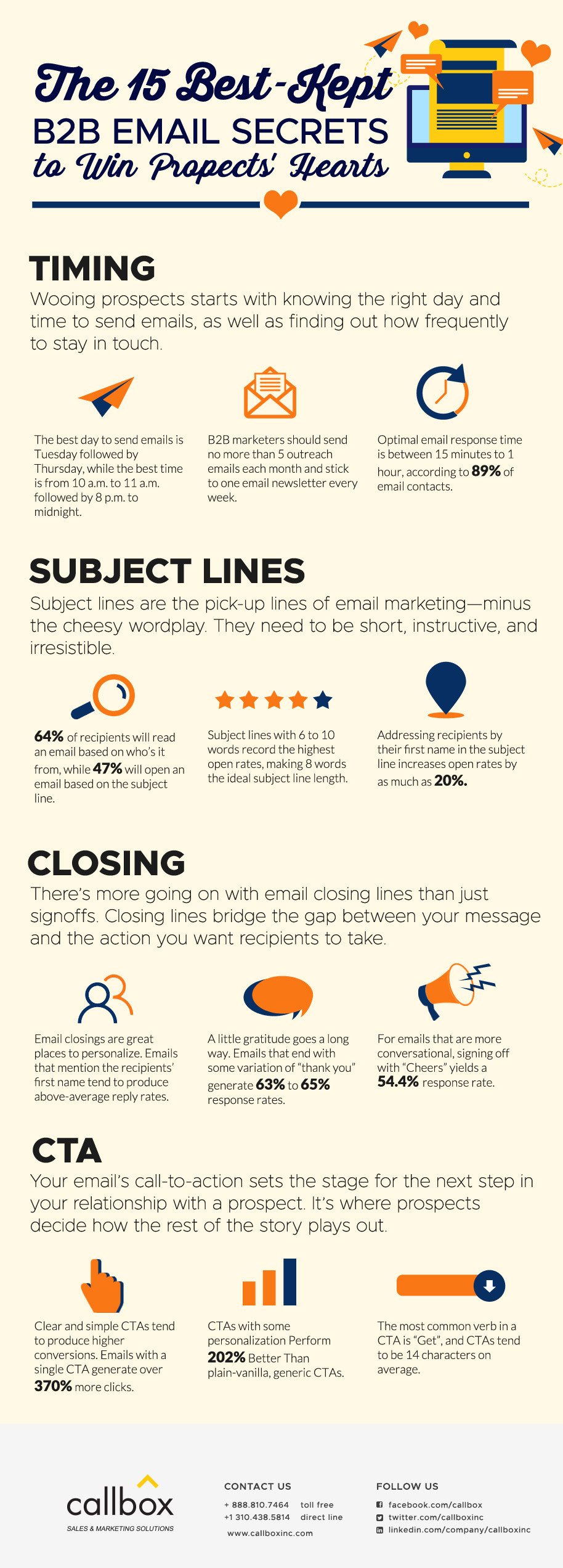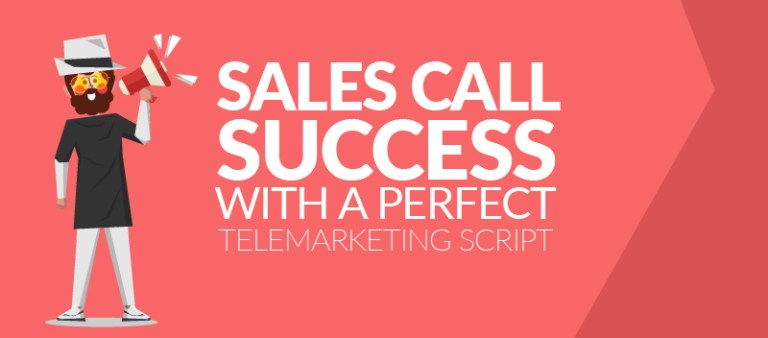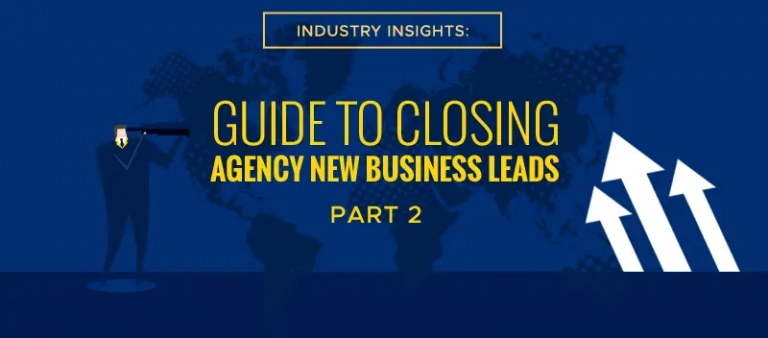Writing sales emails is probably not your idea of spending Valentine’s Day, but it doesn’t mean you can’t get into the loving spirit while preparing your drafts and templates. The next email you send out just might be what you need to move the sales process forward – if you put your heart into it, that is.
But how exactly do you win over B2B prospects through emails?
Today’s infographic shows 15 proven ways to generate more opens, click-throughs, replies, and conversions. These best practices cover 5 crucial requirements of a compelling B2B email:
- Finding the optimal sending schedule and frequency
- Capturing your audience’s attention with an irresistible subject line
- Striking the right balance between content and design in the email body
- Ending on a right note with an engaging closing line
- Helping recipients act and respond with a clear CTA

1. Finding the best sending schedule and frequency
Just like dating, wooing prospects through emails requires impeccable timing. You need to know the right day and time to send out emails, as well as determine how frequently to stay in touch.
There’s no hard-and-fast rule that tells you the ideal email sending schedule, and different studies in the B2B marketing literature can suggest vastly different email sending times and frequencies. This means you’ll have to determine this based on your own experience and requirements.
Fortunately, marketing project management platform CoSchedule has published extensive compilations of various studies on optimal email schedule and sending frequency, which we can use as starting points to time our emails more effectively:
- The best day to send emails is Thursday, and the best time is from 10 a.m. to 11 a.m.
- You should send no more than 5 outreach emails each month and 1 email newsletter each week.
- 89% of email contacts expect you to reply within 1 hour.
Related: Sell Smarter with these 6 Email Marketing Automation Workflows
2. Capturing your recipients’ attention with an irresistible subject line
In many ways, subject lines work like pick-up lines. They’re both designed to hook and retain your audience’s attention, and both try to achieve the objective of initiating a conversation.
But, unlike a pick-up line, a subject line (mostly) does away with cheesy puns and wordplays, focusing instead on substance and conciseness.
Again, there’s no magic formula to craft succinct subject lines (although AI seems to be getting better at this task), so you have to test and iterate to find subject lines that work best for you.
Addressing recipients by their first name in the subject line increases open rates by 20%
Here’s a couple of things to keep in mind in your quest for a captivating subject line:
- From lines trump subject lines at driving email opens: 64% of recipients will read an email based on the sender’s identity, while 47% will open an email based on the subject line.
- Subject line length impacts open rates: subject lines with 6 to 10 words generate the highest open rates.
- Subject line personalization works: Addressing recipients by their first name in the subject line increases open rates by as much as 20%.
Related: Your Email Subject Lines are Subject to Change
3. Striking the right balance between content and design in the email body
Now that you’ve gotten your recipient’s attention, it’s time to bring your email’s main message in front of your audience. Getting your message across means applying the right mix of content and design elements to your email body.
The email body is where you deliver what your subject line has set out. It’s where you build the case for taking the action specified later in your CTA, so the components of the email body all need to move toward that direction.

There are millions of possible copywriting angles and design choices you can make when developing the email body, and only a handful will actually have a direct, positive impact on engagement, response, and conversions.
The following email body best practices are supported by recent research in B2B email marketing:
- Email messages that have between 50 to 125 words generate response rates of more than 50%.
- Emails written at a third-grade reading level have the highest response rates, fetching 17% higher response rates than emails written at a high school reading level and 36% higher response rate than emails with a college-level writing style.
- Email recipients rank the top email turnoffs as: too much text (17%), slow-loading images (17%), emails not optimized for mobile (16%), and inconsistent design choices (12%).
4. Ending on a right note with an engaging closing line
A quick glance at messages in a typical inbox is enough to tell us that most marketers tend to treat closing lines only as an afterthought. Closing lines play a more important role than simply providing a place for you to sign off.
Closing lines impact whether recipients act or ignore your CTA
Email closings bridge the gap between your message and the action you want recipients to take. If subject lines determine whether a prospect opens an email, closing lines impact whether recipients act or ignore your call-to-action (CTA).
To maximize responses and conversions, consider the following research-backed tweaks to your email closing line:
- Email closings are great places to personalize. Emails that mention the recipients’ first name tend to produce above-average reply rates.
- A little gratitude goes a long way. Emails that end with some variation of “thank you” generate 63% to 65% response rates.
- For emails with a conversational tone, signing off with “Cheers” yields a 54.4% reply rate.
5. Enabling recipients to act and respond with a clear CTA
Anyone who has seen at least two dozen rom-coms will eventually notice that practically every movie in this genre includes a climactic scene where one of the lovers chases down the other and make a grand speech in some comically unsuitable setting.
While the CTA resembles the climax of a story, it’s very different from what happens in a film. Your email’s call-to-action sets the stage for the next step in your relationship with a prospect. It’s where prospects decide how the rest of the story plays out.
So, to improve the chances of prospects acting on your CTA, take these key insights into account when crafting your call-to-action:
- Clear and simple CTAs produce higher conversions. Emails with a single, specific CTA generate over 370% more clicks.
- CTAs with some personalization Perform 202% Better Than plain-vanilla, generic CTAs.
- The most common verb in a CTA is “Get”, and CTAs tend to be 14 characters on average.
Related: 5 Strong CTA Examples (with Solid CTRs and Conversions) to Learn From
Conclusion: Use these 15 email secrets on your next send-out or campaign, and win the hearts and minds of your target prospects.





